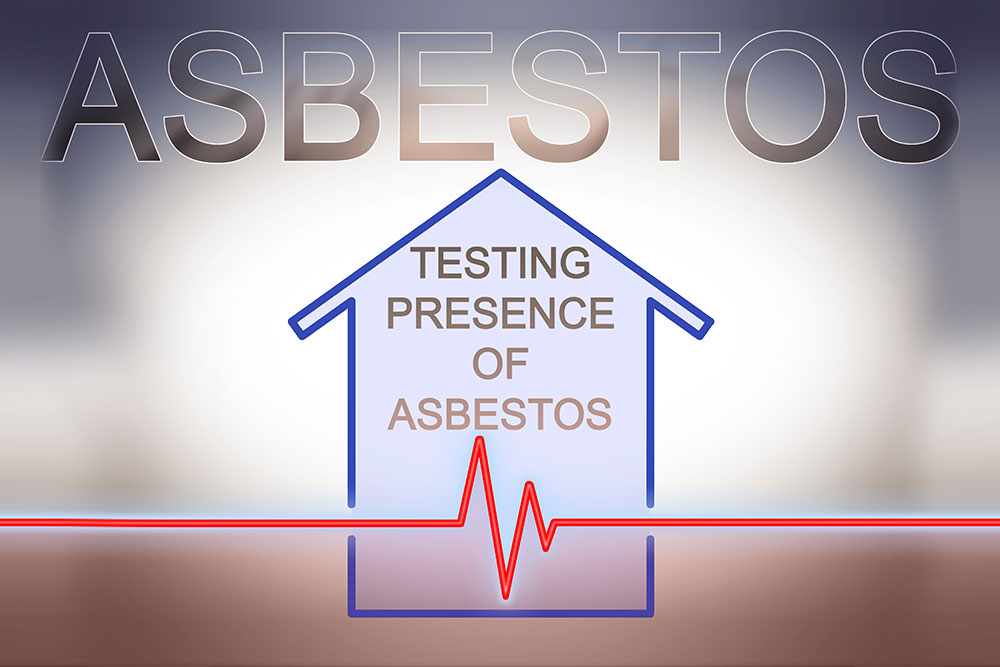
It’s completely understandable if you’re worrying about asbestos. It’s a killer. There’s no getting around it. Asbestos exposure still kills over 5,000 people in the UK every year. And this is after being banned for over two decades.
This death toll is what makes asbestos so notorious. Almost every adult in the UK will have a cursory understanding of asbestos and what it can do to your health. But a cursory understanding leaves a lot of room for misconceptions.
And misconceptions can cause a lot of unnecessary anxiety. If you’re unsure how to stop worrying about asbestos, you probably need to learn more about it.
This article is not trying to diminish the serious risk asbestos poses. We’re trying to dispel the common myths that probably drive your asbestos anxiety.
Why is Asbestos Dangerous?
Asbestos is made up of tiny fibres. When asbestos is damaged, these fibres can become airborne and enter people’s lungs.
Usually, our lungs are pretty good at keeping particles or other foreign materials we breathe in from penetrating our soft tissues. This isn’t true of asbestos fibres, however.
Because of their size and shape, asbestos fibres can easily pierce lung tissue and become embedded, provoking a response from the body’s immune system as it attempts to remove the foreign body. However, this immune response can cause scarring, trigger abnormal cell growth or damage DNA, which can cause cancer or other serious diseases to develop.
I’m More Worried Than Ever – What Can I Do?
Asbestos is dangerous but its effects on the body are not always as straightforward as those described above. A range of different factors determine how much of a risk asbestos poses to your health, and your asbestos anxiety may be more of a cause for concern than the asbestos itself.
The prolonged and consistent exposure to asbestos fibers increases the likelihood of developing asbestos-related diseases. Therefore, it is crucial to focus on prevention, proper handling, and responsible disposal of asbestos-containing materials. You should also address any undue anxiety through accurate information and professional guidance.
Below, we’ve outlined some steps you can take if you’re concerned about asbestos where you work or live.
Check When Your Property or Workplace Was Built
The first and most straightforward thing is to check the year your property or workplace was built.
Suppose construction took place in or after 2000. In that case, there shouldn’t be any asbestos or asbestos-containing materials (ACMs) in the building.
Asbestos was banned entirely in the UK in late 1999 so, 2000 is generally the year from which you can be confident asbestos wasn’t used in construction.
You can’t use this rule for refurbishments or renovations, however. Structures built before 2000 may still contain asbestos that was overlooked or not safely removed during post-2000 works.
Get Your Property or Workplace Tested for Asbestos
If you live or work in a property built before 2000 and are still concerned, you should get the building tested for asbestos. It will help you in one of two ways:
It will either prove there’s no asbestos present in the building so you’ve got nothing to worry about,
Or…
You’ll know asbestos is a concern but you can act to control or eliminate the risk.
It might be costly or time-consuming to remove the asbestos or ACMs safely. Still, it really is the best way to stop your asbestos anxiety.

Treat Asbestos with Respect
Even if you confirm asbestos is present in your property or workplace, don’t panic. Many assume that asbestos only becomes dangerous when exposed but this isn’t strictly true.
Airborne asbestos fibres pose a risk to your health and are released when asbestos or ACMs are disturbed or damaged. Properly maintained asbestos isn’t necessarily something you need to worry about.
There are also different risk levels for different asbestos-containing materials. Certain ACMs are more likely to release airborne fibres than others.
Read More: How Dangerous Is Asbestos in Common ACMs and Products
Understand When Asbestos Exposure is Harmful
Before reading this article, you probably knew that asbestos exposure can cause cancer or respiratory issues. This is true but it’s something of an oversimplification.
There haven’t been enough studies on asbestos and its effects on our bodies to determine if there is such a thing as a ‘safe’ level of exposure. No amount of asbestos exposure’s thought of as safe. But much evidence suggests it takes prolonged exposure to asbestos for the most severe health issues to develop.
What Evidence Suggests
Statistics released by the UK Asbestos Training Association (UKATA) have shown that around two-thirds of annual asbestos-related deaths now happen to those over 75. The statistics also show that asbestos-related deaths for under 65s are decreasing. Any death is a tragedy but this evidence does suggest that those who worked with asbestos for years before its 1999 ban are at the most significant risk.
So, while it cannot be completely ruled out, it’s likely that brief asbestos exposure will not be harmful. This is also true for any exposure to complete or undamaged asbestos.
Remember, the inhalation of airborne asbestos fibres poses the greatest danger. These fibres are only released when asbestos is damaged or disturbed in some way. Or fibres can also be released during asbestos mining operations. These scenarios are now much less common thanks to the asbestos ban and primarily those who worked extensively with asbestos pre-1999 suffer from its ill effects.
Ambient Asbestos
This might worry you, but everyone is exposed to asbestos daily, regardless of where they live or work. But asbestos levels in the ambient air are low.
The small amount of asbestos in the air comes from previous activities involving the material, such as mining, manufacturing or using ACMs. But despite its prevalence, ambient air asbestos is considered extremely low risk.
In fact, the World Health Organisation currently ranks the risks posed by airborne asbestos as similar to that of being struck by lightning or ingesting carcinogens from food cooked over charcoal. This risk level supports the idea that low levels of asbestos exposure are relatively harmless.
Airborne Asbestos After a Fire
Fires can cause a spike in airborne asbestos levels if ACMs are present in the blaze. This is a significant concern around property fires and recently prompted several responses from the government in the wake of the Grenfell disaster. That’s why the London borough where the tragedy occurred released public health advice on airborne asbestos shortly after the incident. They concluded there was no increased risk to the surrounding area.
And there are a few other things to bear in mind if you live or work close to the site of a fire that may have released asbestos fibres into the air.
- Asbestos fibres will disperse to low concentrations once they’re released into the atmosphere
- Any exposure to asbestos fibres caused by a fire will likely be brief
- The nature of the fire may contain the asbestos or limit its potential to harm
- Clean-up crews should know how to contain asbestos after a fire emergency
Trust Your Risk Assessments
Your employer is legally required to assess and manage the risks present in your workplace.
You should also be fully briefed on these risks and made aware of the control measures put in place. This obligation applies to all industries, including the construction industry, where employees are at the most significant risk of exposure to ACMs.
Our Asbestos Awareness training will help construction industry employers and employees ensure all risks of asbestos exposure are accounted for and adequately controlled on building sites. You can help deliver proper safety guidelines and awareness for teams working in buildings that might still contain asbestos and ACMs. The training course guides you through everything you need to know regarding asbestos awareness and the health risks it poses.


























































































































































































































































































































































































































































































































































































































































































































































